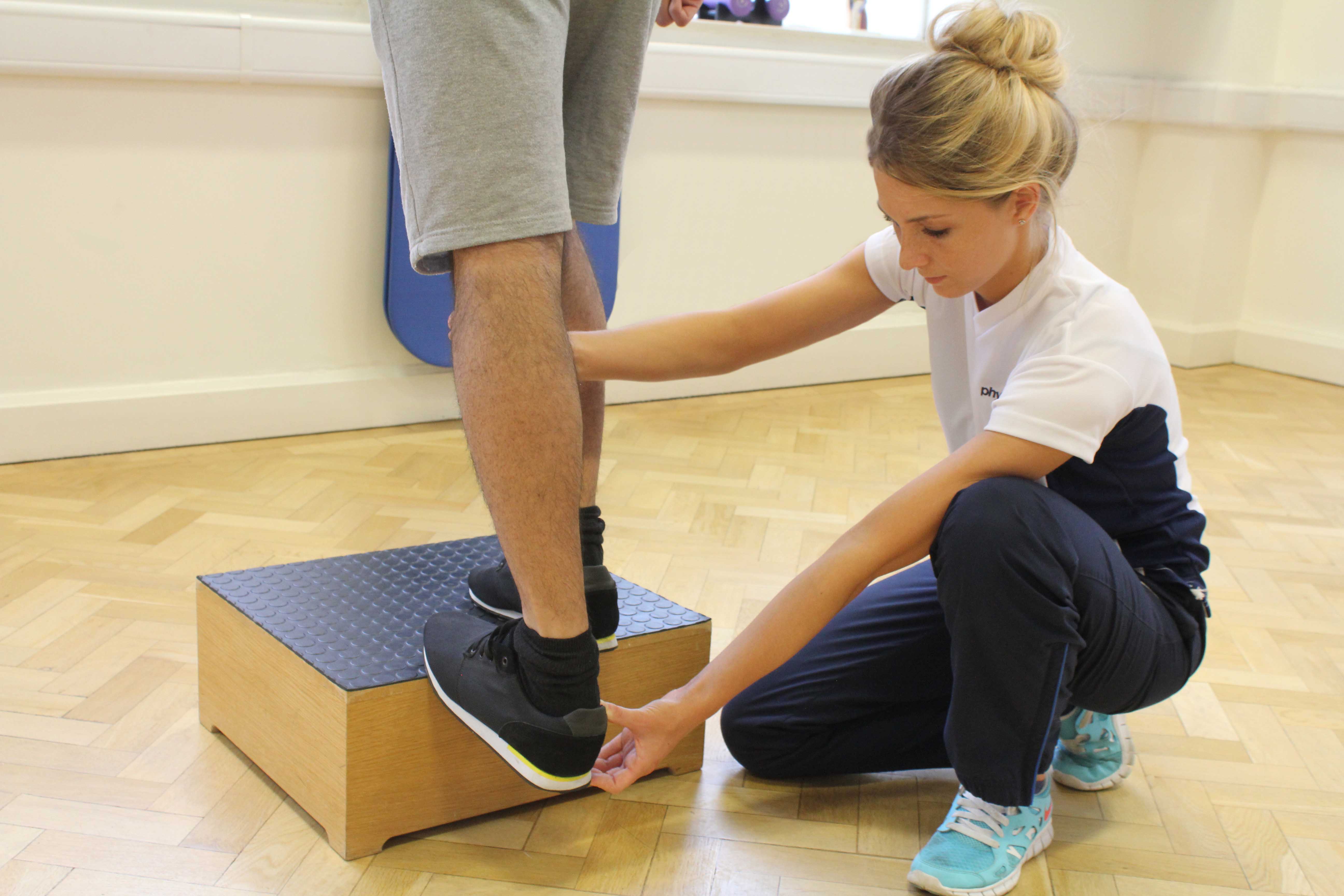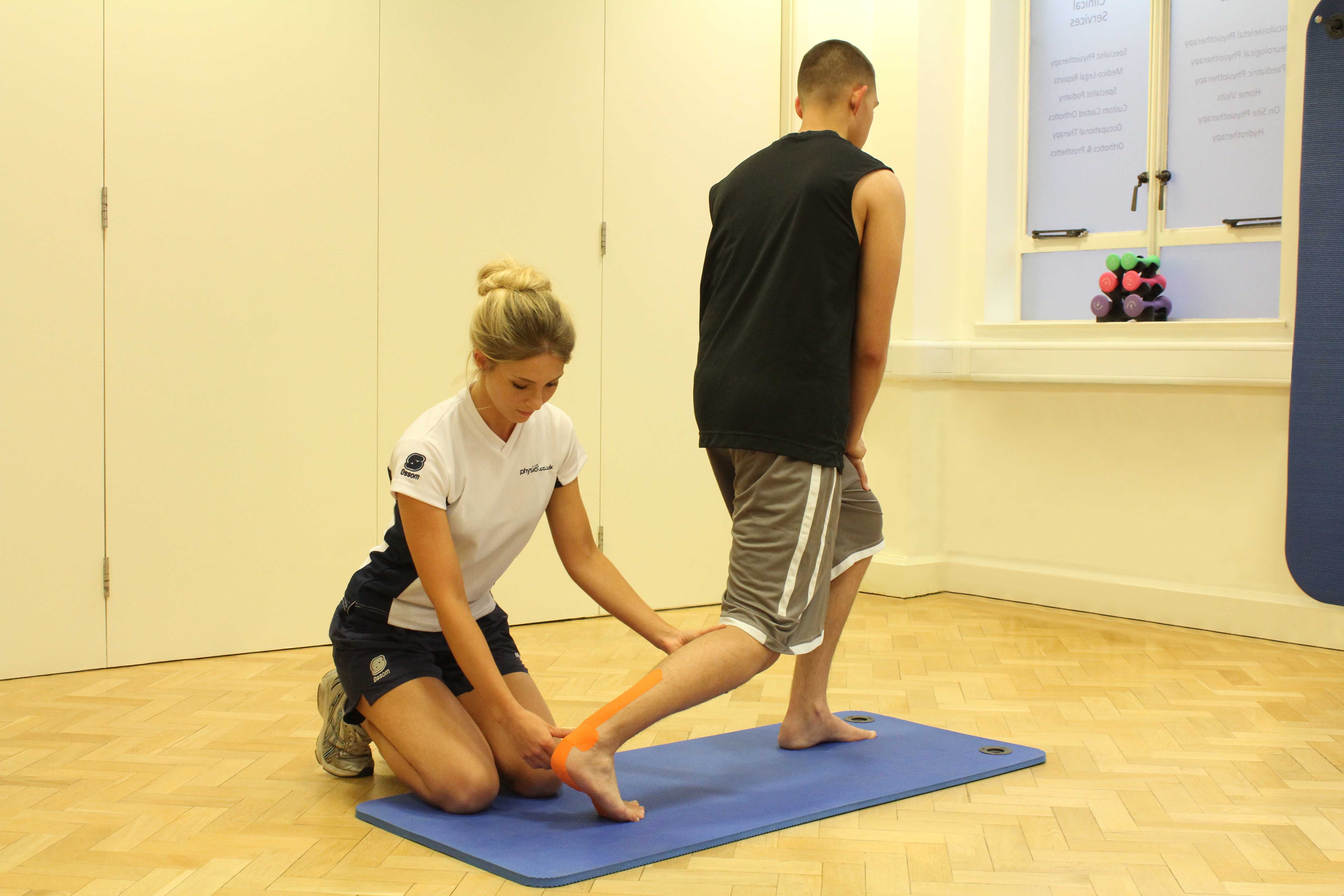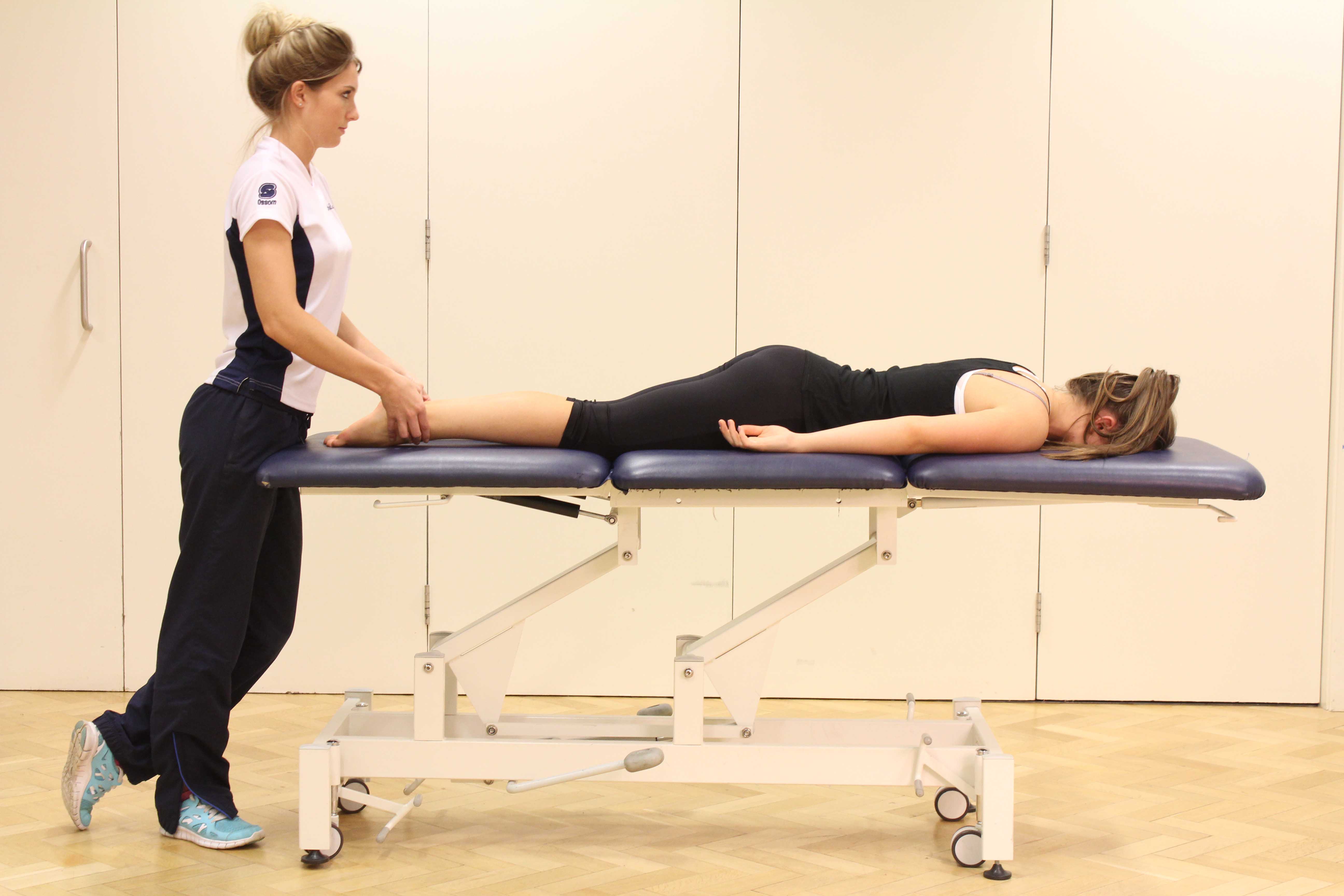Achilles Tendon Repair
The Achilles tendon is the thickest and strongest tendon in the body and originates from the calf muscle (gastrocnemius and soleus) and inserts into the heel of the foot (calcaneus). A tendon rupture is when a certain movement has caused a break in the tendon and the ends no longer come together. Achilles tendon ruptures are most commonly experienced by males aged 30-50 years. They are the most commonly ruptured tendon in the body. There are many other explanations for pain in the Achilles tendon region and it is therefore important to have an accurate diagnosis. The following signs may indicate an Achilles tendon rupture:
- Sudden onset of pain
- You may hear a ‘shot’ sound
- Feels like you have been hit in the lower leg area
- Unable to put a normal amount of weight on the affected leg especially the toes
- A gap in the tendon if you have a complete rupture
- Tightness in the calf muscle
- Reduced strength of the calf muscle
- Stiffness in the ankle and foot joints
- Pain when the calf muscle is put under stretch
- Extensive swelling around the tendon area
- Tender to touch the area
 Above: Active stretch and strengthening exercises for the ankle
Above: Active stretch and strengthening exercises for the ankleRupture occurs when the forces to the tendon are too great for the tendon to be able to cope with. This may either occur in a single instance or due to repeated episodes that build up to cause the injury. There are a number of factors that contribute to an Achilles rupture and the physiotherapists at Physio.co.uk will help you make appropriate lifestyle changes to reduce your chances of reinjury. The contributing factors to a rupture may include:
- Long distance running as a hobby or sport
- Playing sports that involve rapid and frequent changes in direction
- Running or playing sport on hard surfaces
- A history of Achilles tendinitis
- Inappropriate footwear
- Weak calf muscles
- Tight calf muscles
- Limited recovery between training sessions
If you have a complete rupture of the tendon you may need to have surgery to realign the tendon ends. This can be done as an open procedure during which the calf area is cut open to access and repair the tendon. Another option is percutaneous surgery where a smaller incision is made to access the tendon. In both methods, the tendon is stitched together in its previous position and allowed to heal. Surgical management of the Achilles tendon means that you are less likely to rupture the tendon again in the future although you are at a greater risk of complications such as infection, increased scar tissue and deep vein thrombosis. If you do need open surgery, it is best to have it done as soon as possible to prevent greater separation and shortening of the tendon ends. Early mobilisation following your surgery will help to reduce these potential complications and encourage a greater rehabilitation outcome. Once the surgery has been carried out, you will be given a functional brace or cast for 6-8 weeks while the healing takes place. The brace allows you to gradually increase the movement in your ankle each week and is essential for your recovery.
 Above: Taping the ankle to improve stability during rehabilitation exercises
Above: Taping the ankle to improve stability during rehabilitation exercisesPhysiotherapy prior to ORIF ankle
Whilst waiting for your operation it is important to maximise your rehabilitation potential and maintain a general level of strength and fitness in other areas of the body. At Physio.co.uk, your physiotherapist will work with you to create a rehabilitation programme that you can begin before you have the Achilles repair. This will include various treatments including:
- Strengthening exercises of the unaffected leg and upper limb muscle groups
- Stretching the unaffected muscles especially the calf muscle to prevent future injury
- Cryotherapy (ice) treatment of the Achilles region to reduce swelling
- Gently passive movements to maintain range of movement
- Pain control advice
- Prevention advice for the future
Symptoms after ankle ORIF
After the surgery you will be given an adjustable brace for 6-8 weeks to give the tendon chance to heal in the correct position. During this time you will have to limit your weight bearing activities and will not be able to drive. Other symptoms that may be experienced following surgery include:
- Stiffness of the ankle joint and possibly knee
- Swelling
- Pain
- A scar where access to the tendon has be made
- Reduced strength of the calf muscle
- Tightness of the calf muscle
- Reduced range of movement
 Above: Soft tissue friction massage of the ankle ligaments
Above: Soft tissue friction massage of the ankle ligamentsPhysiotherapy after ankle ORIF
Weeks 1-8
Initially, physiotherapy will be limited due to the cast brace although movement will be gradually increased each week via the settings on the brace. However, it is still important to continue with the rehabilitation programme to prevent any long term complications and maximise your recovery. Physio.co.uk will be able to provide a progressive programme that is tailored toward your goals and return to work, sport or hobbies. Whilst the brace is on, physiotherapy will include:
- Gentle passive and active range of movement exercises
- Cryotherapy
- Gentle soft tissue mobilisations
- Gentle massage and around the calf area to prevent scar tissue build up
- Frictions around the scar
- Ultrasound to facilitate healing
Week 8 onwards
After 8 weeks, you will have a follow-up appointment with your consultant who will scan your calf and tell you if the tendon is healing sufficiently. The surgeon may then remove the cast and you will be able to fully weight bear and gradually build up the distances you drive. You will then be ready to begin the more active stage of your rehabilitation programme with Physio.co.uk. At this stage the following physiotherapy treatments may be offered:
- Ultrasound to increase the strength of the healed tendon
- Soft tissue massage and frictions
- Graduated calf strengthening exercises
- Joint mobilisations of the foot and ankle and possibly knee
- Proprioception (joint awareness) exercises
- Balance retraining
- Hydrotherapy and water based exercise
- Continuing rehabilitation for unaffected muscle groups and joints
- Cardiovascular activity
Week 12 onwards
You will now have regained a good range of movement and strength in your affected leg and will be able to progress to more functional and sport or job specific exercises. Physio.co.uk will be able to advise you on the level to begin these and when to safely progress. Example of the treatment provided at this stage includes:
- Dynamic balance and proprioception exercises
- Return to agility based running
- Progression of calf stretches and strengthening
- Gradual return to sport-specific drills
- Return cautiously to training/ job
Summary
An Achilles tendon repair involves open or percutaneous surgery where the tendon is stitched together and allowed to heal. Starting physiotherapy as soon as possible following your surgery is critical in the recovery of your Achilles tendon. Although the rehabilitation process is gradual, the success rates of this surgery and the functional outcome is very positive if you are an active participant in the recovery. By working together with the physiotherapists at Physio.co.uk, you will be able to concentrate on returning to sport or work without few complications. Please call Physio.co.uk on 0330 088 7800 to book an appointment and reach your rehabilitation potential today!

 0330 088 7800
0330 088 7800





































